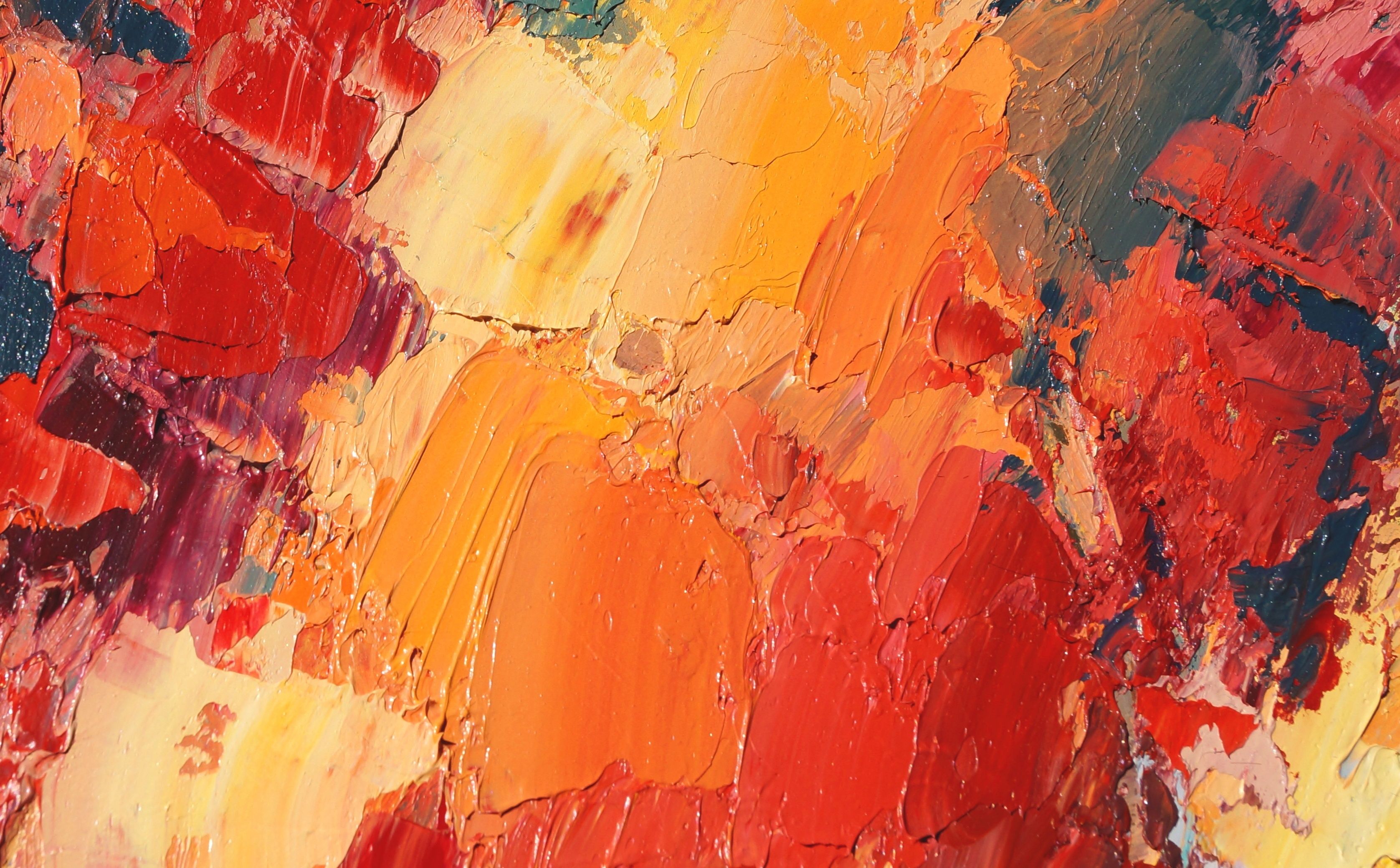New LIBS Technique Allows for Identification of Materials in Oil Paintings
Scientists have demonstrated LIBS stratigraphy to identify the chemical composition and pigments of small fragments from two oil paintings by Bellini and Brughi, with the results providing important information for conservation and restoration purposes.
A new technique developed by researchers at ENEA in Frascati, Italy, allows for the identification of materials used in oil paintings through studies of correlations and ratios between the element line intensities during laser-induced breakdown spectroscopy (LIBS) stratigraphy (1). This technique is a valuable tool for conservators and restoration experts who need to accurately identify the chemical composition of materials used in cultural heritage objects. This study was published in Spectrochimica Acta Part B: Atomic Spectroscopy (1).
Hand drawn oil painting on canvas. Abstract art background. Color texture. Fragment of artwork. Brushstrokes and spots of paint. Modern, contemporary art. Colorful canvas. | Image Credit: © Molgaart - stock.adobe.com

The researchers tested this technique on small fragments of the oil paintings “Emmaus Dinner” by Bellini (XVII century) and “Annunciation” by Brughi (XVIII century), which had insufficient information collected in-situ. The samples were first analyzed by scanning electron microscopy with energy dispersive X-ray spectroscopy (SEM-EDX) and Fourier transform infrared (FT-IR) spectroscopy to identify the elemental and molecular composition of the surface layers, mostly covered by Ca-based patina (calcium oxalate and carbonates). The depth profiling by LIBS made it possible to distinguish surface contaminations and retouches from the original pictorial materials.
The stratigraphic variations of the chemical composition were established by a proper normalization of the element line intensities, which was necessary because of the large changes of overall plasma intensity during ablation of heterogeneous samples. The layer separations were confirmed by principal component analysis (PCA). Studies of the correlations and ratios between intensities of the analytical element lines were effective in identifying pigments and priming layers, and in some cases, indicating a possible material provenance.
In the Bellini's painting, the researchers identified natural umber, azurite, green Earth, goethite, lead-tin yellow, and lead white, the latter being detected in all examined fragments. Surface contamination by debris and retouches by modern pigments containing Ba, Cr, and Zn were also detected. The presence of K and Na in the priming layer suggests the use of glass, commonly employed in the XVII century. In the Brughi's painting, the researchers identified a thin layer of ultramarine blue placed over a green Earth layer, while the priming layer was mainly constituted by gypsum. On this painting, they also detected surface restoration by Ba-based modern pigments.
The researchers highlight that knowledge of the chemical composition of materials used for the realization of cultural heritage objects is crucial for conservation and restoration purposes, for attesting their authenticity or geographical origin. The choice of a diagnostic technique for characterization of cultural heritage materials must take into consideration several aspects related to the object's unicity, possible intrinsic fragility, and presence of multilayered structures, especially when considering painted surfaces.
The new technique developed by the researchers is a valuable tool for the accurate identification of materials used in cultural heritage objects, particularly for painted surfaces. While other spectroscopic techniques are available for surface analysis, the stratigraphic elemental characterization without altering a sample is only feasible by synchrotron radiation (SR) or ion beam analyses (IBA), such as proton induced X-rays emission (PIXE) with variable energy, detecting the emitted X-ray fluorescence (XRF). However, the use of these techniques is limited because of difficult access and high running costs of the corresponding facilities. The new LIBS stratigraphy technique provides a more accessible and cost-effective solution for the identification of materials in oil paintings.
Reference
(1) Lazic, V.; Romani, M.; Pronti, L.; Angelucci, M.; Cestelli-Guidi, M.; Mangano, M.; Fantoni, R.Identification of materials in oil paintings through studies of correlations and ratios between the element line intensities during LIBS stratigraphy. Spectrochim. Acta Part B At. Spectrosc. 2023, 201, 106601. DOI: 10.1016/j.sab.2022.106601
Laser Ablation Molecular Isotopic Spectrometry: A New Dimension of LIBS
July 5th 2012Part of a new podcast series presented in collaboration with the Federation of Analytical Chemistry and Spectroscopy Societies (FACSS), in connection with SciX 2012 — the Great Scientific Exchange, the North American conference (39th Annual) of FACSS.